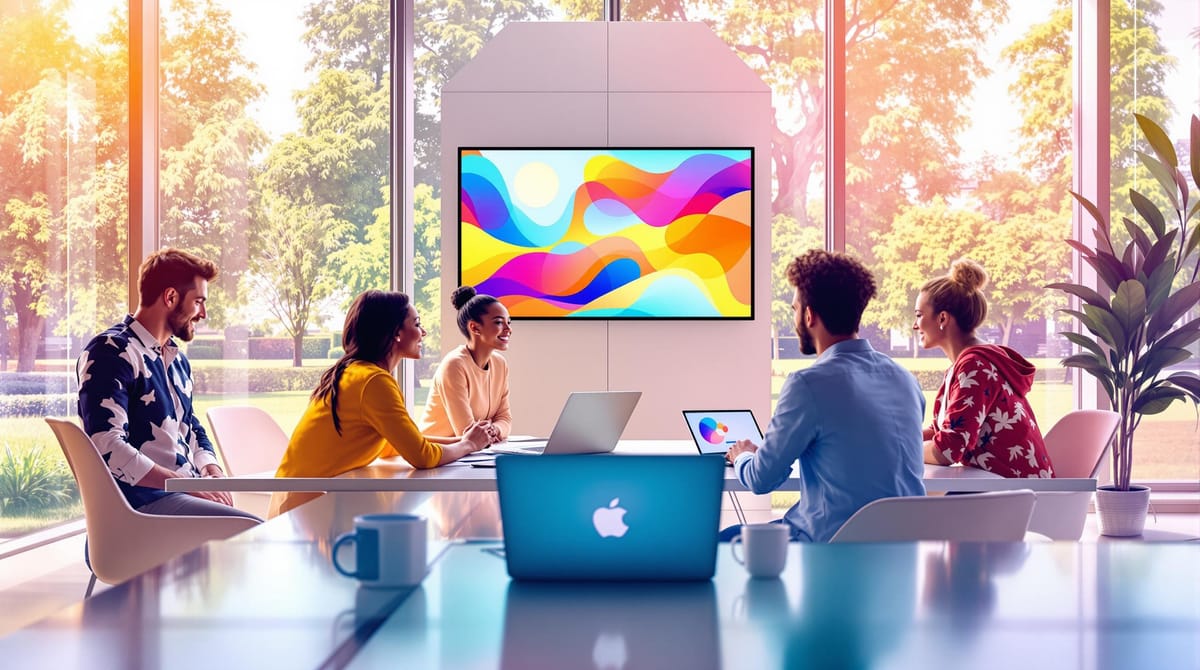The New Rules of Virtual Events: Fundraising in the Digital Age
Explore how nonprofits can leverage virtual fundraising to connect with donors, maximize impact, and navigate the digital landscape effectively.

Virtual fundraising is transforming how nonprofits connect with donors. By 2024, 35% of events were virtual, and the market is growing 18.8% annually through 2030. Nonprofits are using tools like AI and VR to boost engagement and donations, while also saving costs and reaching global audiences.
Key Takeaways:
- Why Virtual Events Work: Cost savings, global reach, real-time data, and eco-friendly benefits.
- Successful Planning: Set clear goals, choose the right event type (galas, classes, hybrid concerts), and use interactive tech tools.
- Top Strategies: Secure corporate sponsors with digital branding, mix in-person and online formats, and leverage social media for fundraising.
- Engagement Tools: Real-time polls, mobile-friendly donation systems, and personalized follow-ups drive donor connections.
Virtual events are here to stay, offering nonprofits a powerful way to engage donors, increase impact, and grow support in the digital age.
Virtual Fundraising Best Practices & Pro Tips
Building Strong Virtual Fundraising Events
Planning a successful virtual fundraising event takes careful preparation and the right digital tools. Start by setting clear goals and defining how you'll measure success.
Setting Clear Goals and Measurements
Use SMART goals to set specific and measurable targets. Instead of saying, "raise more money", aim for something like: "Raise $50,000 through our virtual gala by December 15, 2025, to support our youth education program."
Here’s a general timeline to keep things organized:
- Planning: Start 8–12 weeks before the event
- Tech Setup: Begin 4–6 weeks ahead
- Marketing Launch: Roll out 3–4 weeks in advance
- Final Preparations: Wrap up 1 week before
Track your progress against these milestones to stay on course and ensure your efforts align with your overall goals.
Choosing Your Event Type
Your goals will help determine the event format that best suits your audience and objectives. Choose a style that resonates with your donors and aligns with your fundraising strategy.
| Event Format | Best For | Key Benefits |
|---|---|---|
| Virtual Galas | Large donor bases | High-value auction items, real-time bidding |
| Cooking Classes | Community engagement | Interactive activities, pre-event supply kits |
| Hybrid Concerts | Broad reach | Combines in-person and virtual attendance |
| Online Classes | Educational focus | Expert speakers, scalable attendance |
"With a virtual gala format, there's really no limit to what you can do!" says Kevin Santiago, Senior Director of Marketing and Communications at Paybee.
Tech Tools for Donor Engagement
The right tech can make or break your event. Tiltify’s data highlights the impact of interactive features:
- Campaigns with polls average $2,495 in donations - the highest performance
- Target challenges bring in around $1,984
- Reward-based campaigns generate about $1,621
Look for platforms with features like:
- Easy registration and ticketing
- Real-time donation tracking
- Interactive chat options
- Mobile-friendly bidding systems
- Automated thank-you messages
"You want as few moving parts as possible. You need something easy to use, easy to navigate, and self-explanatory. This platform allowed me to free up my mind and free up my time to actually do the work of fundraising", says Dale Godboldo, Co-Founder of Arts, Hearts + Philanthropy.
Choose tools that integrate smoothly with your donor management software. This makes post-event follow-ups easier and helps strengthen donor relationships in the long run.
Proven Virtual Fundraising Methods
Virtual fundraising methods are a powerful way to connect with donors and broaden your event's reach in today's digital landscape.
Getting Corporate Sponsors Online
Corporate sponsorships thrive when they align with audience interests. As Joe Waters explains: "I like to say that companies look for audiences to tell them what is good, profitable and popular in the world. So it's not about whether you have a walk or run or a gala – or if those events are virtual or live. What matters is what type of AUDIENCE is participating in the fundraiser."
Consider transforming sponsorships into digital experiences:
- Branded Virtual Spaces: Feature sponsor logos prominently on event platforms.
- Interactive Opportunities: Allow sponsors to host product demos in breakout rooms.
- Social Media Integration: Collaborate on contests and branded posts.
"Successful virtual sponsorships rely on making the sponsors feel connected to their target audience in a way that makes them feel at ease and confident."
This approach can also set the stage for hybrid events, combining the broad accessibility of virtual formats with the personal connection of in-person gatherings.
Running Mixed In-Person and Online Events
Blending digital tools with face-to-face interactions can significantly extend your event's reach. For example, one nonprofit expanded its audience from 4 states to 24 by incorporating virtual elements.
Hybrid events create a balance between on-site and online experiences. Here's how they compare:
| Component | In-Person Element | Virtual Enhancement |
|---|---|---|
| Ticketing | Standard entry | Discounted digital access |
| Activities | Live performances | Simultaneous livestream |
| Engagement | Direct interaction | Chat and polling features |
| Sponsorship | Physical banners | Digital ad placements |
"What we've learned along the way is that adding virtual elements into your fundraising and in-person events has incredible benefits. In fact, it should be a vital part of your fundraising strategy year-round, even as the pandemic restrictions lift." – Sarah Baker, Digital Fundraising Strategist at MobileCause
Social Media Fundraising Tactics
Social media has become a cornerstone of fundraising, especially with average event donations increasing by 15% since 2023. Here are some effective strategies:
- Text-to-Give Campaigns: Encourage donations via text during livestreams, leveraging the immediacy and emotional connection of the moment.
- Peer-to-Peer Challenges: Inspire supporters to set up personal fundraising pages. For instance, in Q3 2023, Funds2Orgs worked with over 500 nonprofits on shoe drive fundraisers, where organizations collected an average of 4,500 pairs of shoes, generating around $1,800 in revenue.
- Interactive Contests: Run contests with real-time leaderboards and prizes to motivate donations.
"With the average event donation increasing by 15% since 2023, your nonprofit has a prime opportunity to bring in major fundraising dollars." – OneCause
Step-by-Step Virtual Event Planning
This guide expands on earlier strategies for achieving your event goals and keeping your audience engaged online.
Pre-Event Planning Checklist
Careful preparation sets the stage for a successful virtual fundraiser. With 73% of nonprofits planning virtual or hybrid events, having a solid plan is critical.
| Timeline | Key Actions | Tools/Resources |
|---|---|---|
| 8 Weeks Before | Choose platform, assign roles | Video streaming software |
| 4 Weeks Before | Set up registration, coordinate sponsors | Online registration system |
| 2 Weeks Before | Run technical rehearsals, prep backup plans | Testing equipment |
| 1 Week Before | Conduct final run-through, send donor updates | Communication templates |
Make sure to set up a mobile-friendly donation system early. Run multiple practice sessions to iron out any technical glitches.
Running an Interactive Online Event
Once your checklist is complete, shift your focus to keeping the audience engaged during the event.
-
Live Engagement Tools
Use tools like live quizzes, Q&A sessions, and real-time polls to create interactive moments. Alternating between live and pre-recorded segments can help maintain energy and interest. -
Fun and Entertainment
Incorporate activities like virtual dance parties or games to keep things lively. Breaking up serious discussions with lighthearted moments encourages participation. -
Storytelling That Resonates
Share powerful stories about your cause to connect with your audience on a personal level. This can inspire more support and deepen their commitment.
After the Event: Next Steps
When the event wraps up, keep the momentum going with these follow-up actions.
Within 24–48 Hours: Send personalized thank-you messages, share event highlights, and provide access to recordings. Include impact metrics to show donors how their contributions make a difference.
Ongoing Engagement:
- Group donors based on their level of participation.
- Send updates about the projects funded through their support.
- Stay in touch with newsletters and social media posts.
Focus your follow-ups on expressing gratitude and showing results. Use the data from your registration system to create personalized messages and engagement strategies. This not only strengthens relationships but also sets the stage for future fundraising efforts.
Conclusion: Moving Forward with Virtual Events
Virtual fundraising started as a way to adapt during the pandemic but has since become a game-changer for nonprofits. On Giving Tuesday 2024, Americans donated around $3.6 billion - an impressive 16% jump compared to the previous year. This growth underscores the expanding role of digital fundraising.
Social media plays a big part in this shift, especially with younger donors. For example, 41% of Gen Z donors say social media inspires them to learn about or support causes. Nonprofits that use tools like HelpYouSponsor have seen results, reporting an average 3.8x increase in sponsorships thanks to smoother operations and better donor engageent.
To build on these trends, nonprofits should focus on a few key strategies:
- Hybrid approaches: Combining virtual and in-person elements to extend their reach
- Social sharing: Tapping into the fact that 50% of Gen Z shares fundraisers weekly
- Trust-building: Recognizing that 48% of people rely on recommendations from friends and family when deciding to donate
- AI tools: Using AI to personalize donor communication and improve results
Digital fundraising is gaining momentum. By using these strategies and embracing new technologies, nonprofits can create campaigns that connect with donors across all age groups and drive even greater impact.

